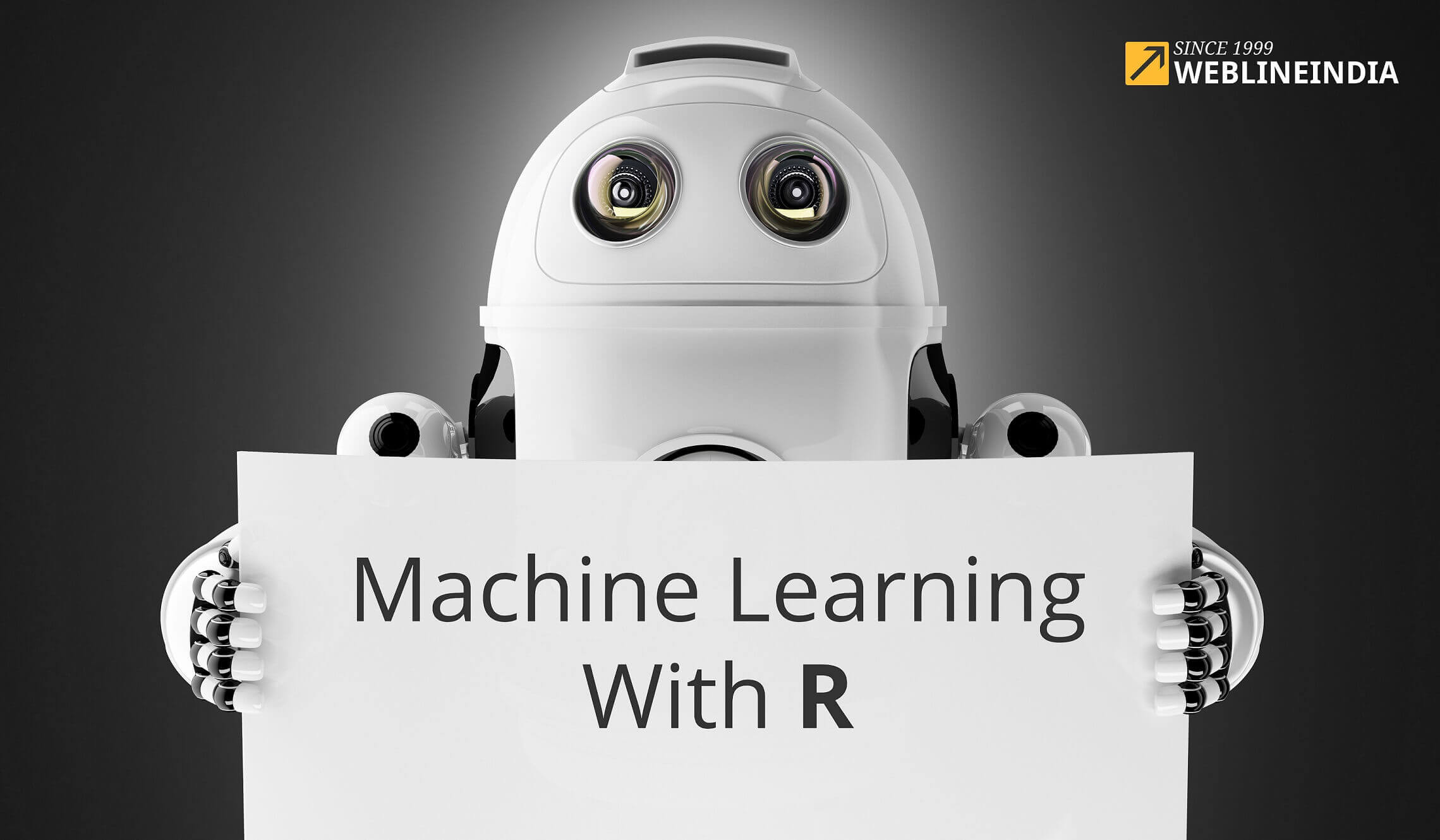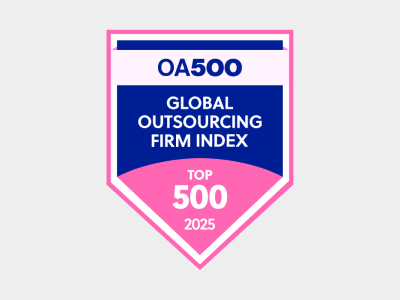
Machine learning with R. The terms might ring a bell to your ears. If so, you will have some questions like, what are the applications of these terms, how good R really is for machine learning developers, what are the advantages to ML Developers by using R, how people use them to improve their business? Let this blog help you to find out answers to all such questions.
MACHINE LEARNING PHILOSOPHY
Remember the old days when you had to go through the trouble to draw people at your business by talking to them and understanding their interests? Some of us, sure do this even today. But as the use of internet increased, the amount of information expanded as well. With the increasing load of information, we know more about our customers and their interests. But how can we make use of it?
Well, Machine Learning is your answer to that.
Machine Learning is an art and a toolset. It is a way of making use of the abundant data/information, we have in our hands. Machine Learning solves many types of problems which varies from simple classification and prediction problems to reinforcement problems, which are developed by mimicking the actual way of human learning.
Machine Learning can help in organizing your processes and systems without explicitly programming it to behave like that. In fundamental programming, you used to have some threshold values programmed on which the whole system used to work. But as new data comes, the system tended to collapse or at least behave a bit out of the loop. Whereas machine learning behaves quite good on the new data as well and there is also a way to train your model for the new data coming.
People use different programming languages to build machine learning models. R is one of them.
What is R?
R is a programming language for statistical computing and graphics. With machine learning becoming more important for data processing, the popularity of the language can only be expected to grow. R is mostly used by statisticians and researchers, but it is making its way in the enterprise market as well due to the growing community and library support of the system.
Click here for more information on R programming language.
Advantages – Machine Learning with R
- Strong Package Ecosystem: The vastness of package ecosystem is definitely one of R’s strongest qualities. If a statistical technique exists, odds are that there is an R package for that as well.
- Speed: R’s software initially had problems regarding speed with large computations, but it was addressed by Revolution Analytics. They’ve re-written computation extensive parts in C and now, it’s blazingly fast.
- Visualization: Visualization is the core part of the data-oriented techniques, machine learning is one of them. To get something fruitful out of the data, we need to understand it. Visualizing the data gives us the grip over the data. As the language R was initially created for the statisticians, the visualization and graphic packages of R are well carved. An example of the package ecosystem is the ggplot2 package, which is the most used R package for visualization.
- Dealing with Big Data: In machine learning, you always use more data, as it is data-oriented. R has HDFS connectors, leveraging Hadoop infrastructure. This gives substantial performance improvement.
These were some of the advantages out of many, why to use R for Machine Learning applications. Similarly, there are some limitations to using R in machine learning applications, and this needs to be clear so that it enables any Machine Learning developer to make a call on which programming language to use for machine learning applications.
Limitations – Machine Learning with R
- Deployment: As most of the applications are developed in high level languages like Java, Python, C++ etc; deploying R has always been a problem to people. Sometimes you create an API, you run the model on your servers and then save it there to load later to predict values. There is no definitive solution for using it.
- Memory: Most (but not all) R packages require you to add data structures to memory (RAM). It takes everything up in memory and then processes it.
- Development: There are different ways of doing one thing. It is sometimes confusing for the R developers to choose between them. The naming convention changes from package to package, which slows down the development process. Confusing object structures and occasionally bizarre & idiosyncratic syntax can be a bothering feature.
Applications of using R for machine learning
Since the inception of computers and machines, we have always strived for making machines that behave like humans. There have been numerous attempts to achieve that. Some failed, some hit a new block. But the technology always won and achieved a new height. To somebody who is still uncertain about the power of this technology, what could be a better way to understand the power of it than looking at the examples and learning about the real life applications of this technology!
Industry Applications of Machine Learning with R
- Finance
R has its own set of statistical packages that helps in forecasting and making predictions in financial firms. Statistical arbitrage is a heavily quantitative and computational approach to financial trading. It uses data mining and statistical methods, as well as automated trading system. R is a preferred technology for this.
- Advertising
As the users are getting smart, advertisements have to be smarter. Google and many other big giants uses R for advertising effectiveness and economic forecasting.
- Logistics
With its famous capabilities for statistical analysis, no wonder R is more likely to be used here. Machine learning can help shippers make better decisions. As to what route to take, lane mapping, shipment tracking etc. Machine learning is also used in simulations to find the best possible route map. Amazon Logistics is an example for that.
- Banking
Fraud detection, credit risk modeling, outlier detection etc. in banking is being done by Machine Learning. ANZ (Australia and New Zealand Banking Group) uses R and machine learning for credit risk modeling.
- Gaming
Microsoft uses matchmaking algorithm in Xbox. Developers use Matchmaking algorithm for generating a competition between players of similar levels. Microsoft uses R for statistical modeling.
- Marketing
The place where the data is in glut. As the data size increases, it becomes harder for the marketing team to come up with a decision and keep track of everything. R is one of the tools that are being increasingly used these days for customer analysis and making business decisions. Microsoft Power BI uses R for that.
- Transportation & Customer Service
Uber, the evolution in transportation, captured most of the land transportation business. To keep up with the customer requirements, Uber started using machine learning and automation with R in the communication channel and used statistical analysis for customer service improvement.
CONCLUSION
The above information will be useful for you to decide if you want to use R for machine learning in production or not. To make the decision you will have to think like a Machine Learning Developer. There are innumerable applications for incorporating R with machine learning and integrate in our daily life. What we provided here is just the tip of the iceberg compared to the huge scope of R in the technology world. After reading this blog, I am sure you might have already started brainstorming some ideas of where can you use the technology in your existing systems. If so, hire our machine learning developers help you to develop it for you. If not, contact us. We will be happy to guide you through it.
Testimonials: Hear It Straight From Our Global Clients
Our development processes delivers dynamic solutions to tackle business challenges, optimize costs, and drive digital transformation. Expert-backed solutions enhance client retention and online presence, with proven success stories highlighting real-world problem-solving through innovative applications. Our esteemed Worldwide clients just experienced it.
Awards and Recognitions
While delighted clients are our greatest motivation, industry recognition holds significant value. WeblineIndia has consistently led in technology, with awards and accolades reaffirming our excellence.

OA500 Global Outsourcing Firms 2025, by Outsource Accelerator

Top Software Development Company, by GoodFirms

BEST FINTECH PRODUCT SOLUTION COMPANY - 2022, by GESIA

Awarded as - TOP APP DEVELOPMENT COMPANY IN INDIA of the YEAR 2020, by SoftwareSuggest